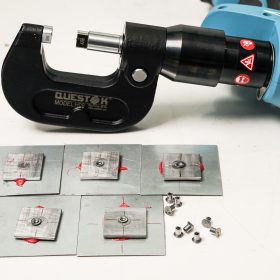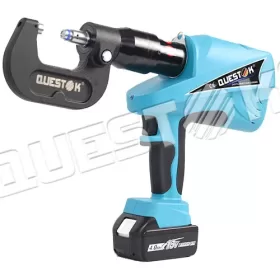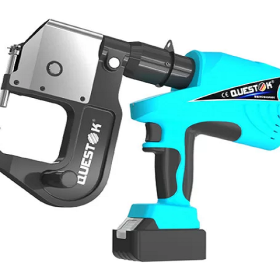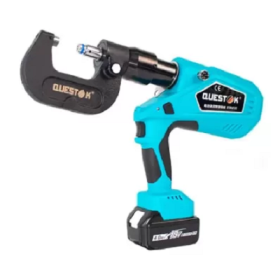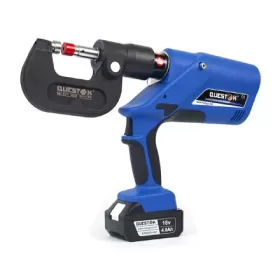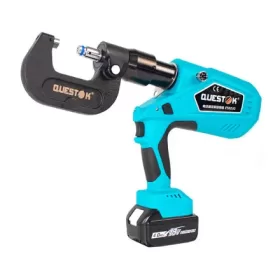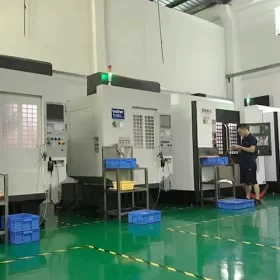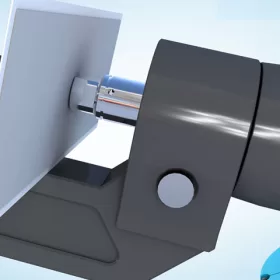Investing in Quality- Features to Look for in Piercing Rivets
Piercing rivets are indispensable fasteners in numerous industrial applications, from construction and fabrication to aerospace and automotive assembly. Investing in high-quality piercing rivets is crucial for ensuring structural integrity, durability, and lasting performance. This guide explores the essential features to consider when selecting piercing rivets for optimal performance.
Types of Piercing Rivets
Piercing rivets come in various types, each tailored to specific applications:
Standard Piercing Rivets: Suitable for general-purpose fastening, including metal-to-metal and composite materials.
Heavy-Duty Piercing Rivets: Designed for applications requiring exceptional strength and load-bearing capacity.
Corrosion-Resistant Piercing Rivets: Ideal for applications exposed to harsh environments, such as marine or chemical settings.
Structural Piercing Rivets: Utilize thicker materials and larger diameters to provide high shear and tensile strength in heavy-duty structures.
Material Composition
The material composition of piercing rivets plays a critical role in their strength, durability, and resistance to corrosion:
Steel Rivets: Offer high strength and load-bearing capacity, making them suitable for structural and heavy-duty applications.
Stainless Steel Rivets: Exhibit enhanced corrosion resistance in harsh environments, such as outdoor applications, chemical processing plants, and corrosive atmospheres.
Aluminum Rivets: Lightweight and versatile, providing excellent shear and tensile strength while maintaining a lower weight.
Copper Rivets: Offer high electrical conductivity, making them ideal for electrical and electronic applications.
Head Style
The head style of piercing rivets impacts their appearance and ease of installation:
Domed Head: Provides a rounded top with a clean finish, suitable for aesthetic applications and areas where a flush surface is desired.
Countersunk Head: Designed to be recessed into the material, creating a flush surface and preventing snagging or damage.
Button Head: Features a slightly raised head with rounded edges, providing a secure grip for installation and preventing scratching.
Flat Head: Offers a flat top that allows for unobtrusive installation and reduces the risk of snagging or interference.
Hole Size and Grip Range
The hole size and grip range of piercing rivets determine their compatibility with the materials being fastened and the thickness of the joints:
Hole Size: Refers to the diameter of the hole required for the rivet to pass through and form a secure joint.
Grip Range: Indicates the range of material thickness that the rivet can effectively fasten.
Selecting the appropriate hole size and grip range ensures a tight fit, preventing the rivet from spinning or falling out.
Riveting Tool and Installation
The installation method and compatible riveting tool are crucial factors to consider when selecting piercing rivets:
Manual Riveting: Utilizes a hand-held rivet gun to apply pressure and deform the rivet’s head.
Pneumatic Riveting: Employs an air-powered rivet gun for faster and more consistent installation.
Hydraulic Riveting: Provides the highest level of force for high-strength and heavy-duty applications.
Choosing the right riveting tool based on the rivet’s size, material, and installation requirements ensures proper deformation and a secure joint.
- Company News
- Industry News
- Tag
- Tags
-
The Advantages of Questok Rivet Guns: Precision, Efficiency, and Durability
In industrial fastening applications, the choice of tools directly impacts productivity, safety, and long-term cost-effectiveness. Questok rivet guns have emerged as a standout solution for professionals across aerospace, automotive, and construction sectors. Combining advanced engineering with user-centric design, these tools deliver unmatched performance. Below are the key advantages that make Questok rivet guns a preferred choice:
-
Rivet Gun FAQ
Rivet Gun FAQ-SPR
-
Fast Assembly and Repair With Cordless Solid Rivet Gun
Questok cordless solid rivet gun stands out as a pivotal innovation, merging portability with power to facilitate efficient and effective fastening in a myriad of applications.
-
Redifine The Role of Self-piercing Riveting Gun Machine
Self-piercing riveting adopts high-speed mechanical fastening skill that joins thin sheet materials, typically steel and aluminum alloys.
-
The Latest Innovations in Clinching Tool Design
Explore the latest innovations in clinching tool design, redefining precision, efficiency, and versatility in material joining.
-
The Application and Maintenance of Self-Piercing Rivet Guns
Delve into the applications of self-piercing rivet guns in the automotive and aerospace industries and reveal the essential maintenance practices that ensure their accuracy and efficiency.
-
Rivetless Riveting Gun for Ventilation Duct Projects
The ventilation duct rivetless gun is a tool for riveting ventilation ducts without rivets.
-
Guide to Using Self-Piercing SPR Riveting Gun
In the automotive industry, self-piercing SPR (Self-Piercing Rivet) riveting guns are commonly used for joining metal components in vehicle bodies, including BMW vehicles.
-
Rivet Gun FAQ
Rivet Gun FAQ-SPR
-
Versatile Fastening- Applications of the Handheld Rivet Gun Across Industries
In the realm of fastening, the handheld rivet gun stands as a testament to ingenuity and versatility. Its ability to effortlessly join materials with sheer strength and permanence has revolutionized manufacturing and construction processes, leaving an enduring mark on diverse industries. Aerospace: Where precision and reliability are paramount, the rivet gun shines. In aircraft assembly, […]
-
Time-Saving Tools- Speeding Up Projects with Electric Blind Rivet Guns
In the whirlwind of project deadlines, every minute counts. But what if there was a tool that could dramatically reduce assembly time, giving you an edge in the race against the clock? Enter the electric blind rivet gun: your secret weapon for lightning-fast and effortless riveting. Electric blind rivet guns are the ultimate time-savers for […]
-
Streamlining Fastening- How an Electric Blind Rivet Gun Enhances Efficiency
Introduction In the realm of manufacturing and assembly, fastening plays a crucial role in securing components and ensuring structural integrity. Traditional manual rivet guns, while reliable, are often time-consuming and labor-intensive. The advent of electric blind rivet guns has revolutionized the fastening process, significantly enhancing efficiency and productivity. This article delves into the benefits of […]
-
The Role of Automation in Electric Rivetless Clinching
Electric rivetless clinching (ERC) is a lightweight joining process that eliminates the need for rivets or other fasteners. This can lead to significant cost savings and increased production efficiency. Automation plays a critical role in ERC, enabling high-speed and high-volume production. Automated Feed Systems Automated feed systems are used to accurately position the two workpieces […]
-
Why Choose a Universal Self-Piercing Riveting Gun for Your Projects?
In the realm of construction and fabrication, riveting guns stand as indispensable tools for creating secure and robust connections. Among the various types available, universal self-piercing riveting (SPR) guns have emerged as a game-changer due to their versatility and efficiency. This article will delve into the compelling reasons why choosing a universal self-piercing riveting gun […]
-
Why Choose Stainless Steel Hollow Rivets for Your Projects?
In the world of industrial manufacturing, choosing the right fasteners for your projects is crucial for ensuring longevity and reliability. Among the many options available, stainless steel hollow rivets stand out as a superior choice for a wide range of applications. This article delves into the compelling reasons why stainless steel hollow rivets are the […]
-
Top Trends in Electric Rivetless Clinching Guns
In the realm of fastening technology, electric rivetless clinching guns have emerged as a revolutionary solution for a wide range of industrial applications. These advanced tools offer several преимущества and capabilities, revolutionizing the way businesses approach their fastening needs. Adoption of Brushless Motors Brushless motors have gained significant traction in electric rivetless clinching guns due […]
